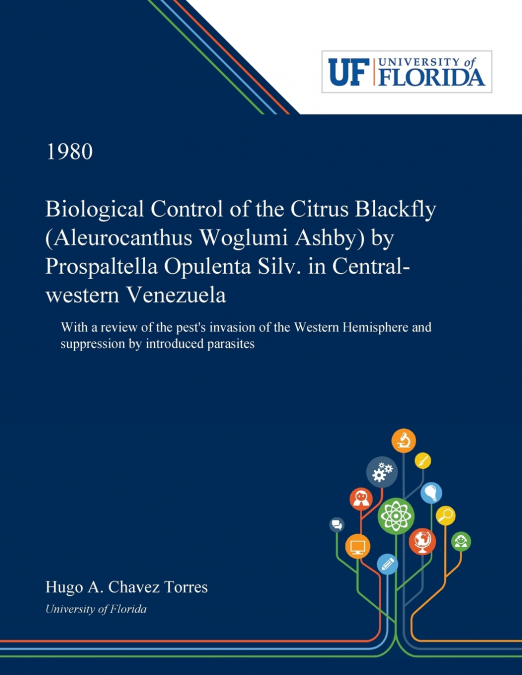
Hugo Chavez Torres
Abstract:The citrus blackfly, Aleurocanthus woglumi Ashby, is assumed to be a native of India, India and Pakistan, South Asia, Southern China, and Asia. Specimens were first received by USDA, Entomology, in 1910 from Maxwell-Lefroy in India. The first report of A. woglumi in the Western Hemisphere was made by Ashby in Jamaica in 1915. From here the citrus blackfly invaded other countries and now is widely distributed in the Western Hemisphere.The introduction of the natural enemies from Asia to the Western Hemisphere can be divided into 2 stages. The first stage began in 1930, with shipment of Eretmocerus serius from Malaya to Cuba, where it was successfully established and controlled the citrus blackfly. This parasite was later introduced into other countries of the Hemisphere. The second stage began in 1949, with the shipment of parasitized material from India and Pakistand to Mexico. Of the species of parasites received in Mexico, Amitus hesperidum, Prospaltella opulenta, and P. clypealis proved to be the most effective in the control of the pest and were later introduced into other countries of the Hemisphere.After being found and eradicated by means of chemical applications from Florida (1937) and Texas (1955), the citrus blackfly reinvaded Texas in 1967 and Florida in 1976. It proved unfeasible, if not impossible, to eradicate these infestations, and both are now effectivelly controlled by parasites. Parasites have provided highly satisfactory control in all infested countries where they have been introduced. When earlier control seemed to break down (Jamaica), the situation was corrected by introduction of a second species of parasite. In Mexico, where adverse climatic or cultural factors cause sporadic local outbrakes, control is reestablished by reintroducing parasite from localities where they are abundant.In Venezuela, A. woglumi was first found in 1967 at San Antonio del Tachira and was first observed in Barquisimeto in 1968. By 1974, the citrus blackfly was widespread through all the country. The first shipment of Prospaltella opulenta from Mexico was received in 1975. Additional shipments were received in June 1976, and positive evidence of establishment was obteined between June and September. Beginning November 11, 1976, egg, nymphal, pupal and adult stages of the citrus blackfly were sampled at 3 citrus grove locations. The sample procedure included standardized leaf counts for the inmature stages. Adult populations were determined by visual counts. Leaf samples included square centimeter counts and were compared with whole leaf counts in an effort to establish reliability of the less laborious square inch method showing high correlation coefficients. Mortality factors were identified in the field as well as in the leaf samples; however, the combined effect of these observed and suspected mortality factors did not prevent the increase of citrus blackfly populations when more favorable conditions returned. After the release of P. opulenta the number of dead citrus blackflies increased as an effect of parasite host feeding as well as by stinging activity of the female parasite that fails to result in parasite development. Cales sp., a native parasite, probably played an important role as a host of the male P. opulenta which develops as secondary parasite and thus hastened the establishment and colonization of P. opulenta. As the introduced parasite increased to a level having a measurable effect on the host population, Cales sp. was displaced as a parasite of A. woglumi. The increase of the P. opulenta population was followed and its impact on the host population established. Complete biological control was achieved in 18 months after P. opulenta was released in the Central- Western region of Venezuela.Dissertation Discovery Company and University of Florida are dedicated to making scholarly works more discoverable and accessible throughout the world. This dissertation, 'Biological Co